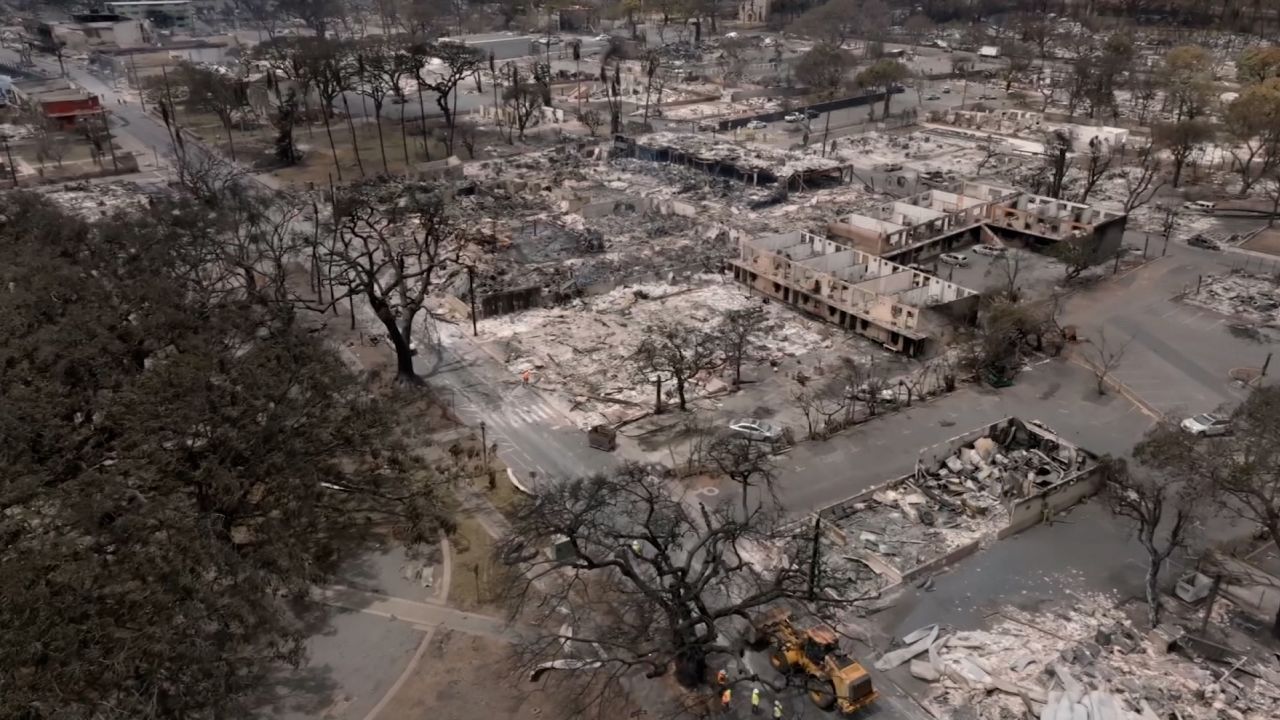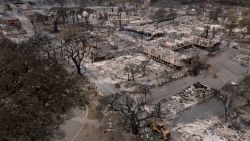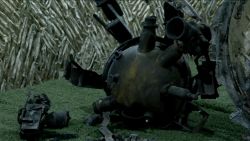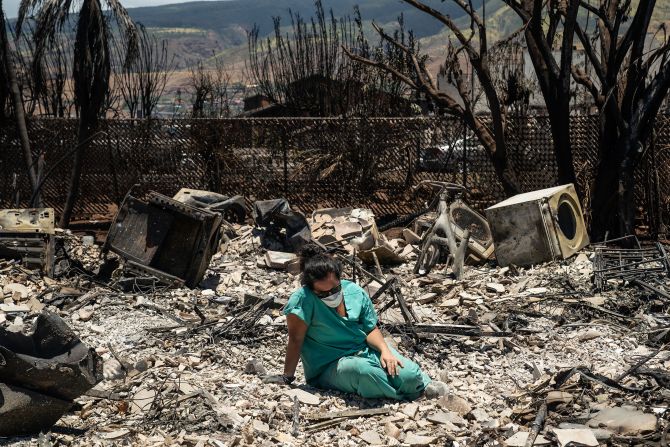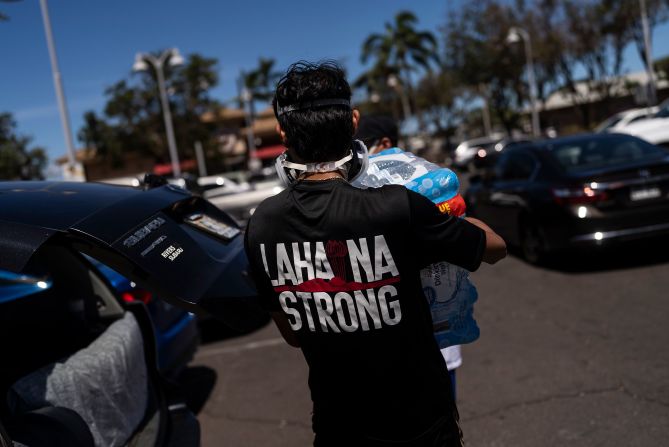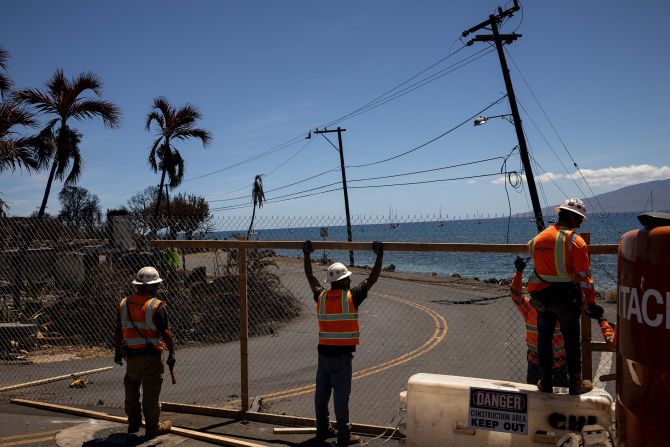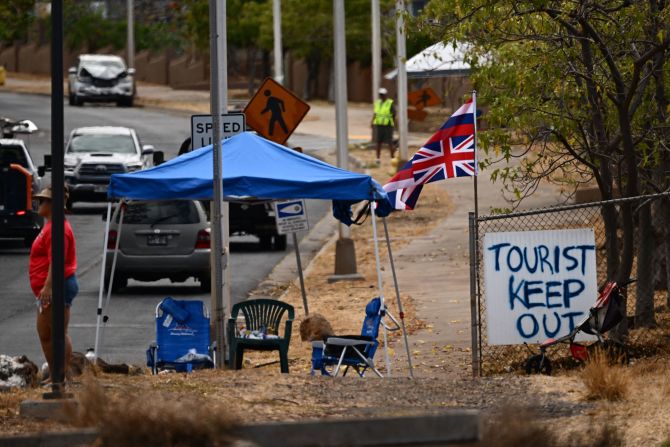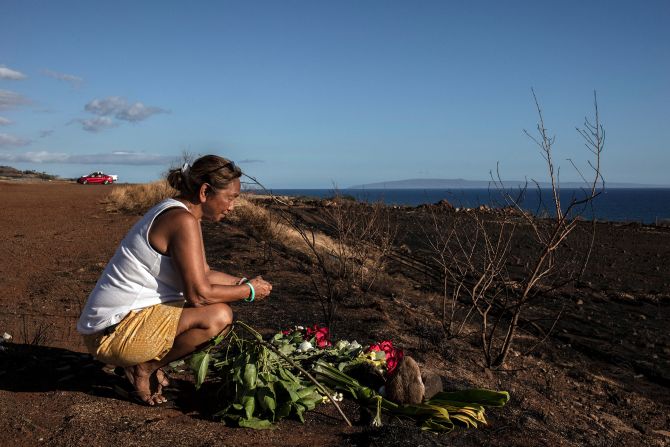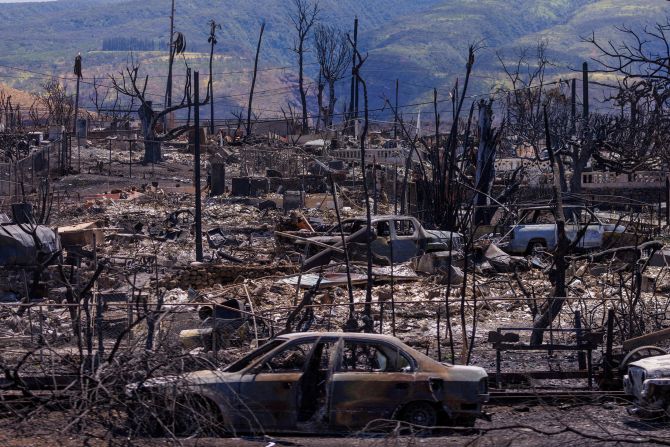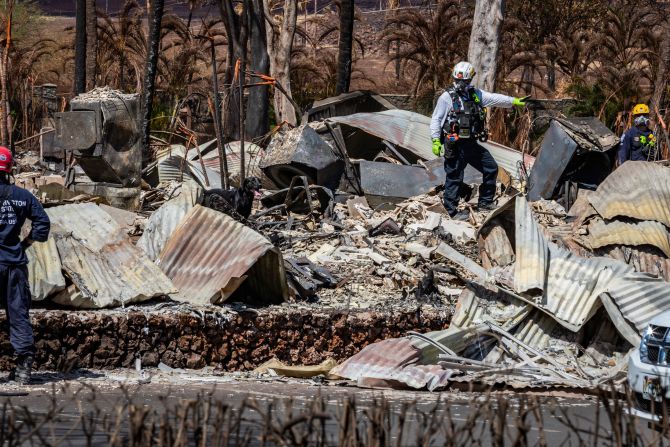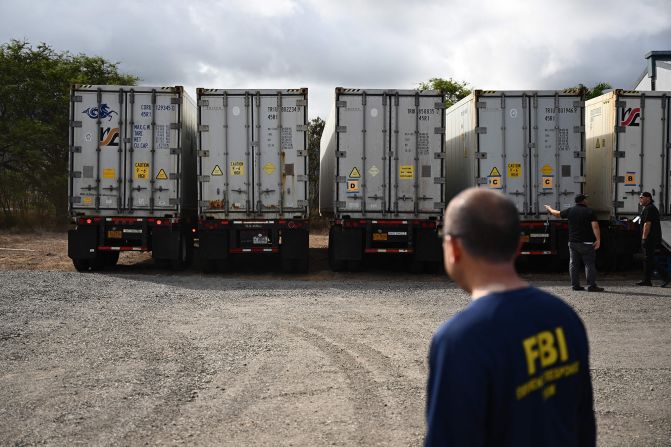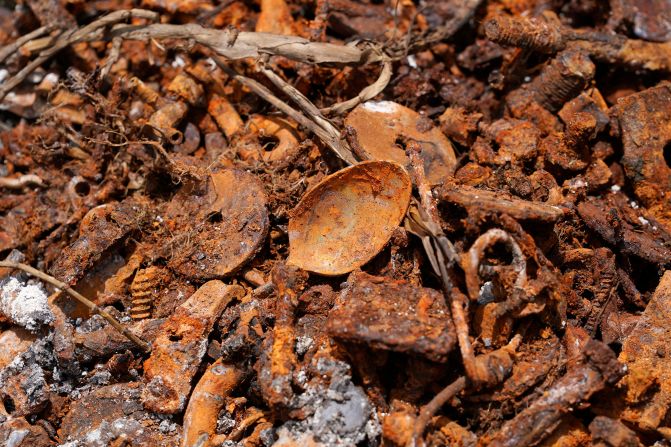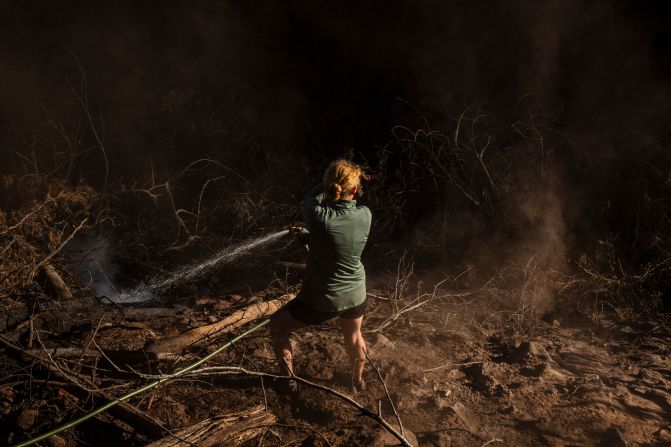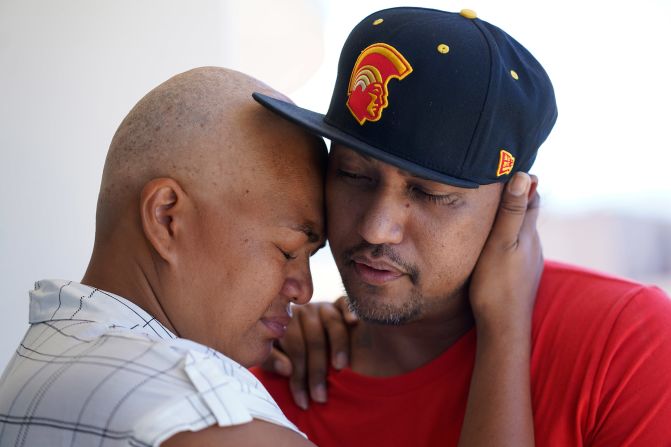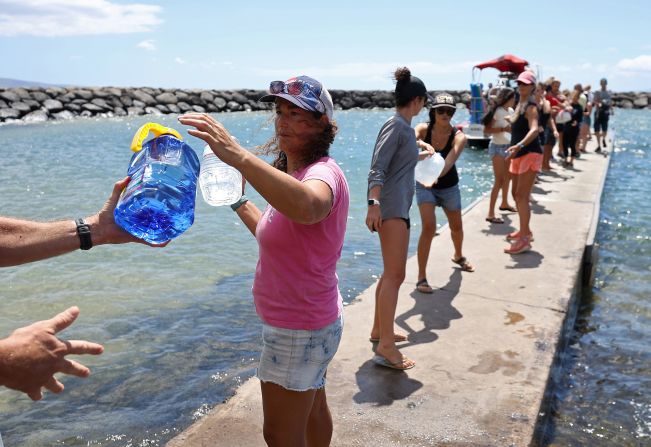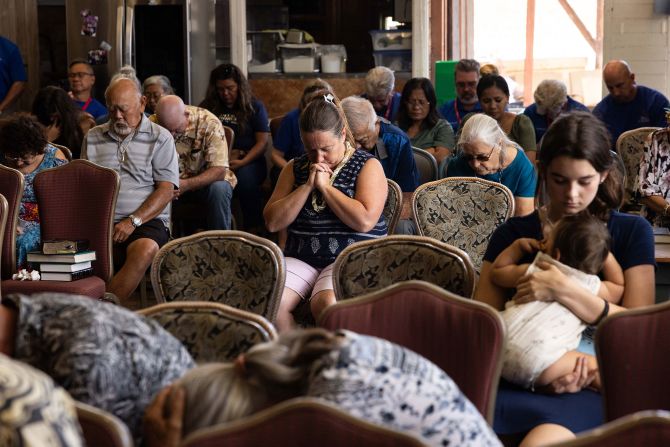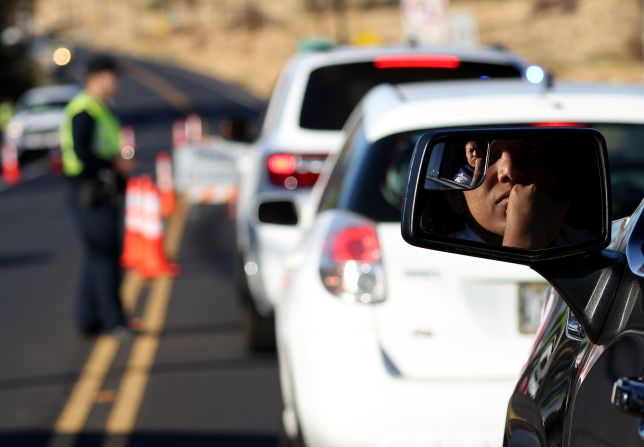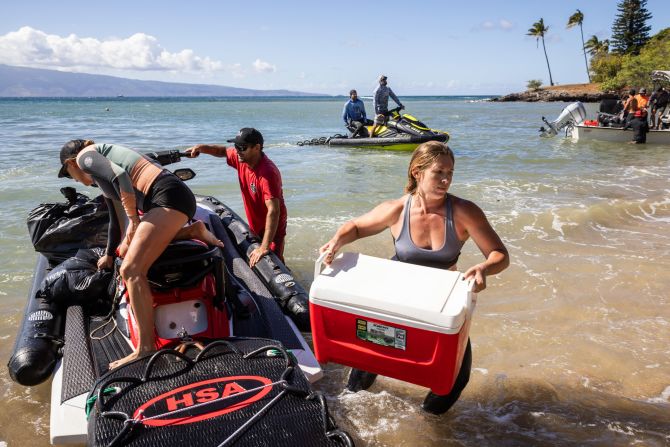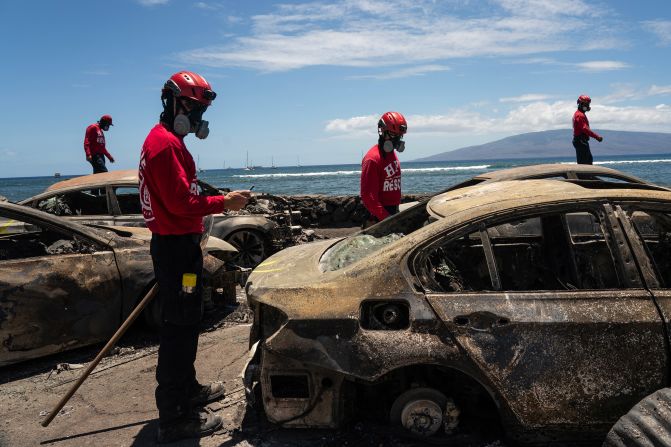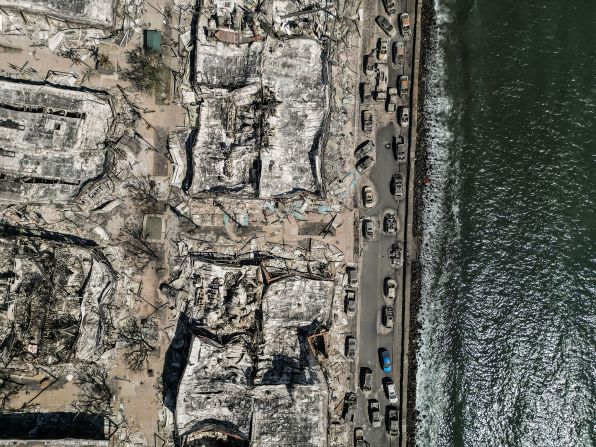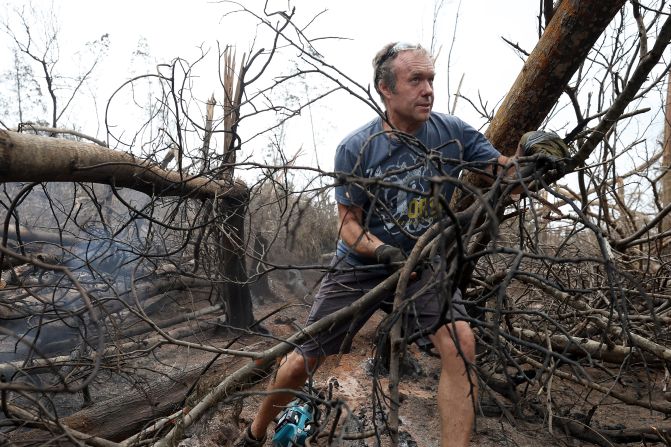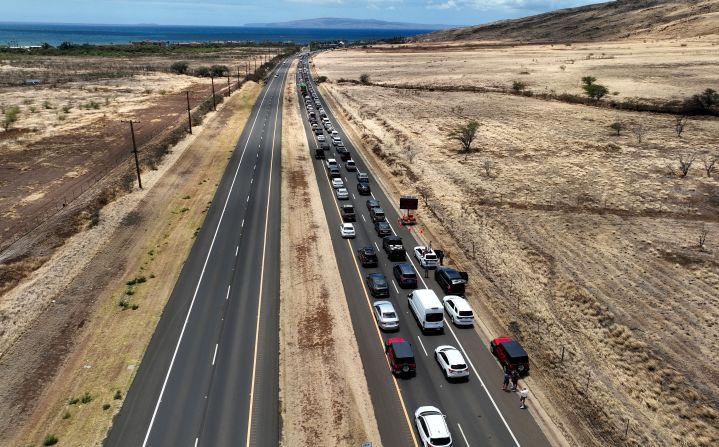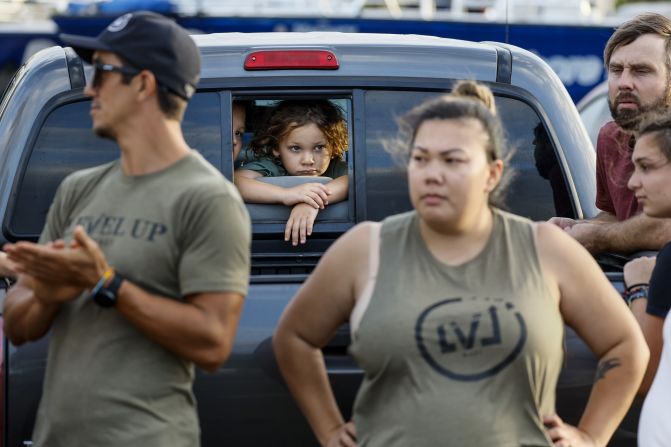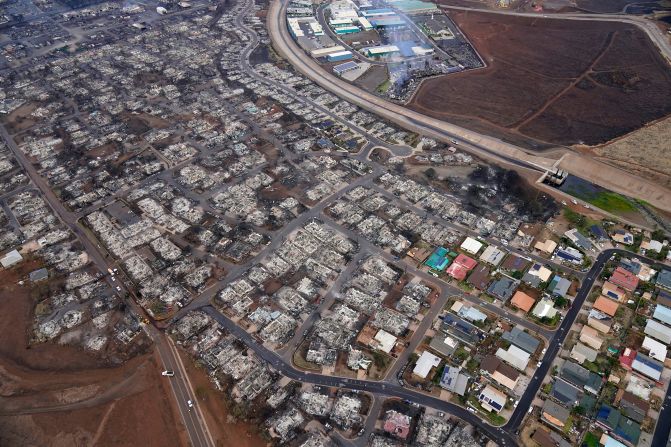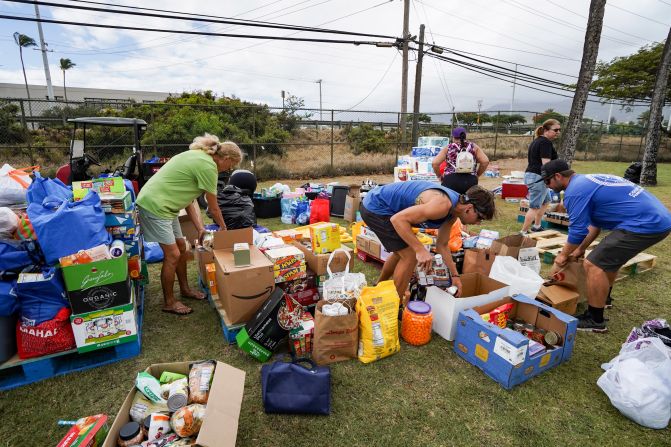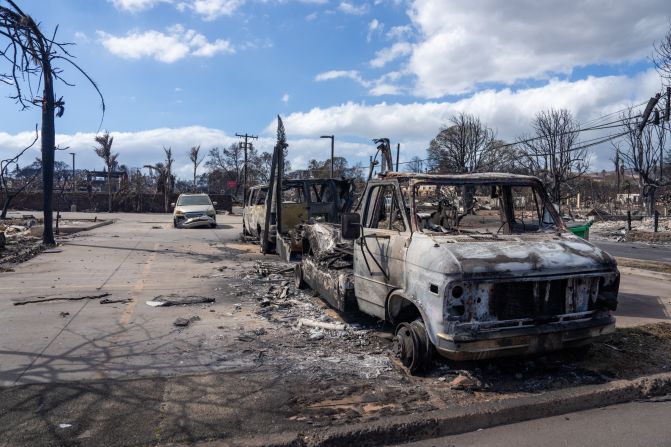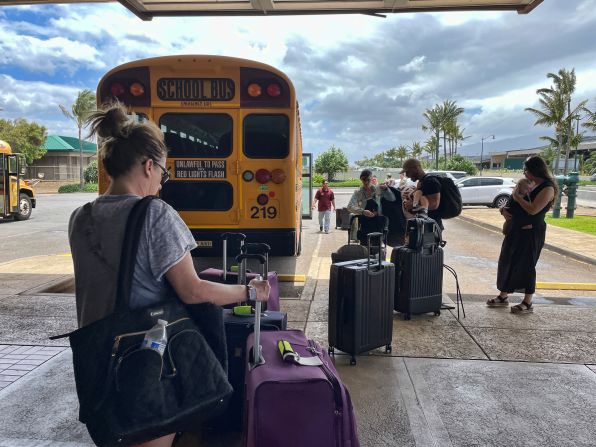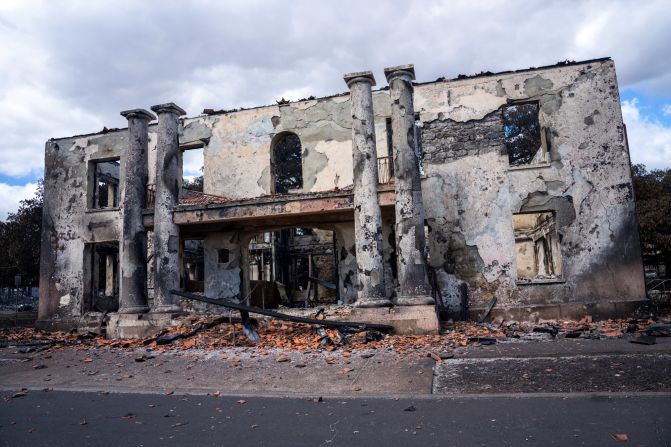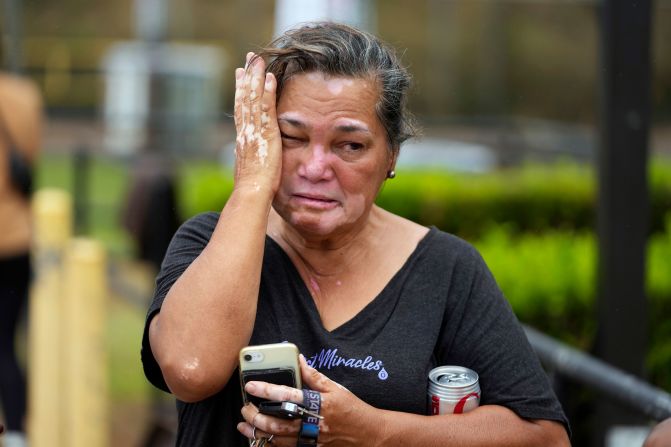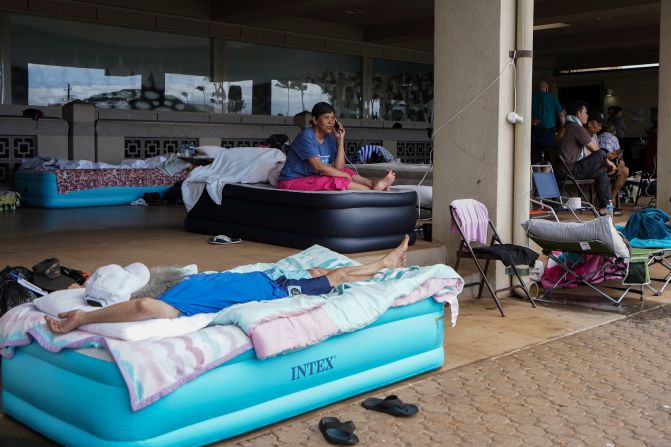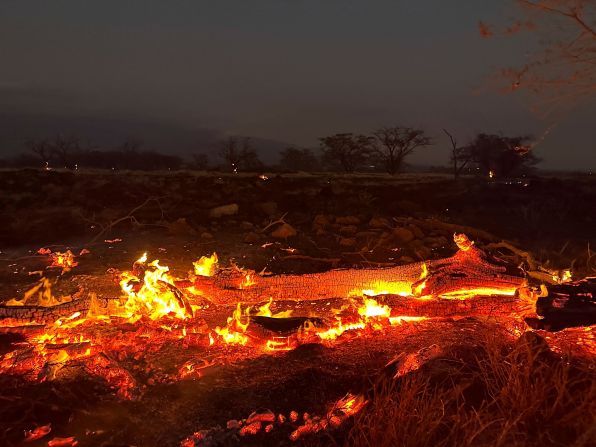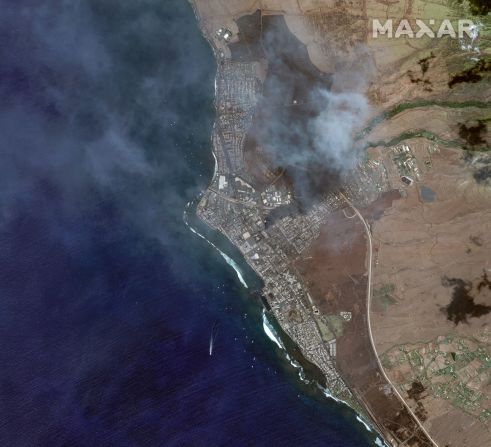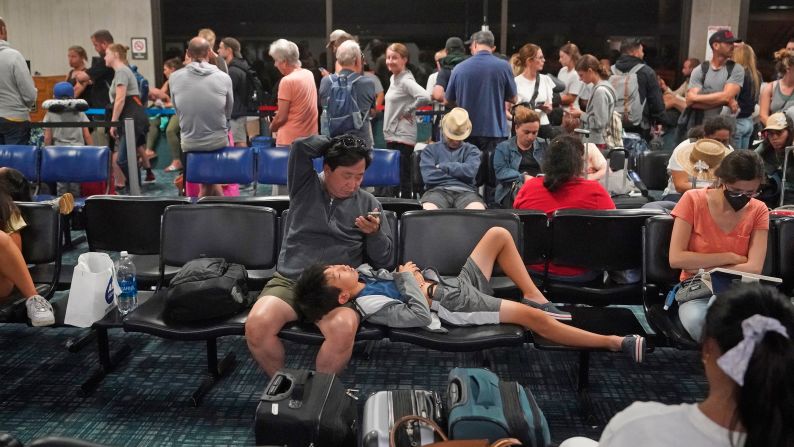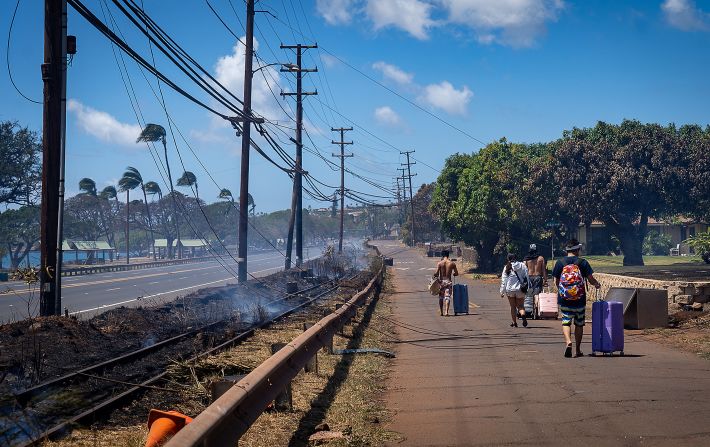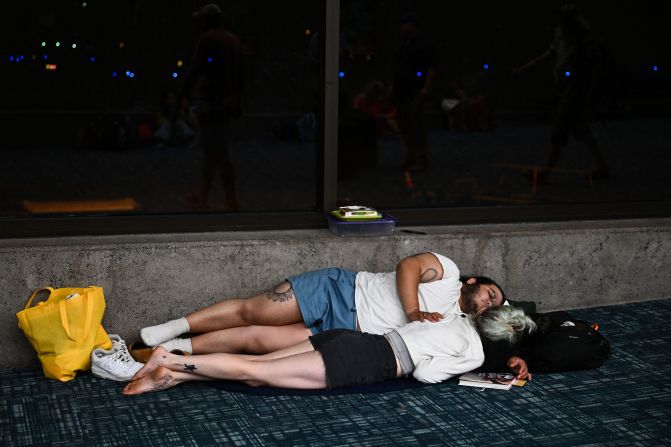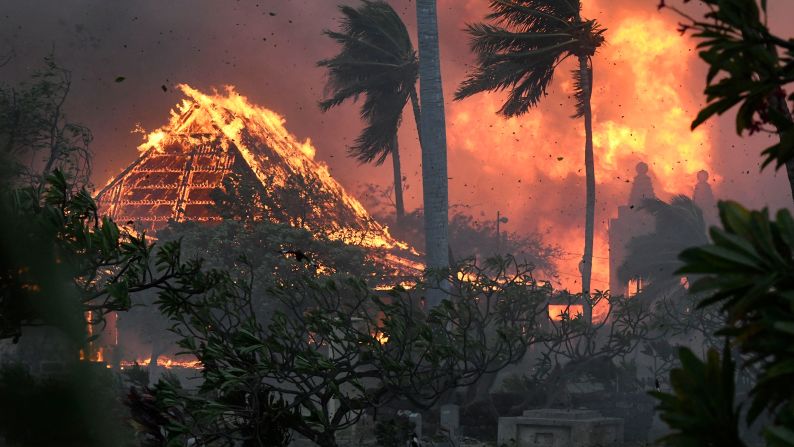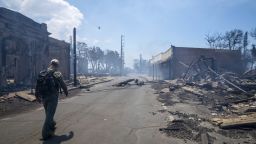The death toll in the Maui wildfire keeps mounting as search teams and their cadaver dogs continue the grim work of sifting through the ruins of burned buildings that once made up vibrant communities on island – including the picturesque town of Lahaina.
At least 89 people have died in the fires as of Saturday night, Gov. Josh Green said, and the death toll is expected to increase. The fire is now the deadliest US wildfire in more than 100 years, according to research from the National Fire Protection Association.
Firefighters have made some progress in containing the blazes, which have leveled entire communities, but officials warn they do not know exactly how many people are still missing after wildfires earlier this week began eating through neighborhoods in western Maui.
The blazes, fanned by powerful winds from Hurricane Dora hundreds of miles offshore, have become the deadliest natural disaster in Hawaii since statehood in 1959.
As of Friday evening local time, all three fires were still active after initial reports came Tuesday. And while there have been some improvements in containment, the risk of flare-ups remains.
People in Kaanapali were evacuating Friday night after spotting a fire in the neighborhood, which is about 4 miles north of hard-hit Lahaina, Maui police said. The fire was later 100% contained, according to county officials.
Of the three largest wildfires that crews have been combating, the deadly fire in Lahaina was 85% contained, Maui County officials said Friday afternoon, up from 80% reported the day before.
The Pulehu fire – located farther east in Kihei – was 80% contained Friday, another sign of improvement from 70% on Thursday, officials noted. A third inferno in the hills of Maui’s central Upcountry was 50% contained on Friday, officials said.
In pictures: The deadly Maui wildfires
Meanwhile, search and recovery teams are using cadaver dogs to help find those missing and the increasing possibility of more deceased victims.
So far, crews have not searched inside buildings, Maui County Mayor Richard Bissen said Friday. The deaths in Lahaina confirmed as of Friday afternoon likely happened outdoors as people were trying to escape flames, Hawaii Gov. Josh Green told CNN.
“Without a doubt, there will be more fatalities. We do not know, ultimately, how many will have occurred,” said Green, noting that officials should have a better idea of that within days.
As search efforts are underway, here’s the latest as of Saturday morning:
- Thousands unhoused: The fires have displaced thousands of people, FEMA Administrator Deanne Criswell told CNN on Thursday. Those staying in shelters have expressed a deep sense of uncertainty, and the governor has urged people to take victims if they can. A hotline will likely be established to connect displaced residents with available rooms in homes and hotels, the governor added.
- Honoapiʻilani Highway closed: Maui police continued to close and reopen the main roads into Lahaina Saturday with little notice, leading to boiling frustrations from residents and exceedingly long lines of people in vehicles. Honoapiʻilani Highway initially reopened at 6 a.m. Saturday for residents. Maui police later said in a Facebook post that residents could now only access Lahaina through Kahakuloa from Maui’s north side.
- Official updates: Communication in parts of Maui have been compromised due to severed lines, and many have reported not hearing from their loved ones in days. Maui County officials have resorted to updating the public via radio stations. They will also post new information on the county’s website and social media pages.
- Disaster response under review: Hawaii Attorney General Anne Lopez will lead a comprehensive review of officials’ response to the catastrophic wildfires, her office said Friday. “My Department is committed to understanding the decisions that were made before and during the wildfires and to sharing with the public the results of this review,” Lopez said in a statement.
- Emergency sirens: News of the review comes as state records show Maui’s warning sirens were not activated, and the emergency communications with residents was largely limited to mobile phones and broadcasters at a time when most power and cell service was already cut.
- Water and power issues: Local authorities have cautioned residents not to drink the water in Upper Kula and Lahaina areas because it is unsafe. “Instead of tap water, customers are advised to use only bottled water for drinking, brushing teeth, making ice and preparing food,” Maui County said Friday. Power restorations were underway Friday, with about 5,000 outages still active, according to the tracking site PowerOutage.us, a significant improvement from about 11,000 a day prior.
Hawaii’s lieutenant governor says she understands that people who live and work in Lahaina are upset by delays in being able to return to the wildfire-damaged community. “I know individuals are very frustrated,” Lt. Gov. Sylvia Luke told CNN’s Jessica Dean on Saturday.
“There have been structures that have not been destroyed, and individuals want to go back,” Luke said.
The state does not intend to intervene in the traffic headaches as the few roads in and out of Lahaina are closed and reopened with little warning, according to Luke, adding that Maui County officials will make those calls to protect public safety.
She declined to weigh into the debate over whether the state was sufficiently prepared for the disaster. “All the assessments and investigation will happen, but really the priority is to make sure that people are fed and people have a place to stay,” Luke said.
While it’s too early to determine the full scope of widespread destruction, the losses are estimated in the billions of dollars.
Maui County experienced $5.52 billion in “capital exposure,” which is the estimated cost to rebuild following damage by the Lahaina Fire, according to an updated damage assessment from the Pacific Disaster Center and FEMA on Saturday.
FEMA issued a statement later Saturday saying the figure is not accurate and that it is still too early to determine the cost of rebuilding.
“The $5.5B figure being reported by some media outlets, and cited to the Pacific Disaster Center, is not a dollar amount from FEMA and does not reflect any damage estimations from our agency,” according to a statement from a FEMA spokesperson.
The FEMA spokesperson said the amount listed was characterized as “capital exposed,” which the agency said “is not a measure of rebuilding costs.” The agency said it has not done any cost estimates yet because it is too early in the response and recovery stages.
“Once all life saving and life sustaining needs are met, we will begin to assess the damage and formulate preliminary estimates,” the spokesperson added.
CNN has reached out to the Pacific Disaster Center for clarification.
A total of 2,207 structures were damaged or destroyed and 2,170 acres have burned as a result of the Lahaina Fire, according to the Pacific Disaster Center and FEMA assessment.
As the town is closed to residents, one couple told CNN they were not allowed in Friday to see their home.
“The police won’t let us go to our home. We lived in the same house for 50 years since 1971,” Steve Dolan told CNN.
“I wanted to go down there, see if anything’s left, but they won’t let us,” he said. “We’ll deal with it and we’ll wait a week or two and we can go see what’s left and start from scratch and rebuild.”
CNN’s Michelle Watson, Sara Smart, Mike Valerio, Andy Rose, Roxanne Garcia, Chris Boyette and Rebekah Riess contributed to this report.
